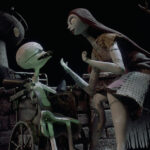“The Doctor,” released in 1991, offers a compelling and deeply relatable narrative for anyone who has navigated the complexities of the medical system. This powerful film centers on Jack McKee, a successful and detached heart surgeon, who experiences a profound shift in perspective when he becomes a patient himself. Starring William Hurt, “The Doctor 1991” transcends the typical medical drama by delving into the emotional and bureaucratic challenges faced by patients within even the most advanced healthcare settings.
From Healer to Patient: A Doctor’s Rude Awakening
Dr. McKee, portrayed with nuanced complexity by William Hurt, initially embodies the archetype of the aloof physician. He treats patients as cases, prioritizing medical procedures over personal connection. His world is one of operating rooms filled with rock and roll and a detached efficiency that keeps him at arm’s length from the human element of medicine. This carefully constructed facade begins to crumble when McKee develops a persistent cough, a seemingly minor symptom that soon reveals a far more serious diagnosis: throat cancer.
Suddenly thrust into the patient’s role, McKee confronts the very system he has long been a part of. He is now subjected to waiting rooms, impersonal interactions, and the frustrating bureaucracy that patients routinely endure. In one striking scene, when a nurse asks him to fill out redundant forms, his indignant outburst, “It may interest you to know that I happen to be a resident surgeon on the staff of this hospital!” underscores his initial inability to accept his new position. This moment of denial highlights the film’s central theme: the stark contrast between the physician’s perspective and the patient’s lived experience.
William Hurt’s Masterful Performance: Humanizing the Egocentric Surgeon
William Hurt’s performance is pivotal to the film’s success. He masterfully avoids caricature, portraying Dr. McKee not as a villain, but as a flawed yet relatable human being. Hurt captures the surgeon’s initial arrogance and detachment, gradually revealing the vulnerability and empathy that emerge as he confronts his own mortality. This transformation is not sudden or simplistic; Hurt meticulously portrays the internal struggle of a man forced to confront his own limitations and the human side of medicine he had previously ignored. Director Randa Haines, who previously collaborated with Hurt on “Children of a Lesser God,” again demonstrates her skill in guiding Hurt to deliver a deeply human and resonant performance.
Finding Connection and Empathy in Shared Vulnerability
As McKee undergoes radiation therapy, he forms an unexpected bond with June, a fellow patient battling a brain tumor, played with gentle strength by Elizabeth Perkins. Their daily encounters during treatment sessions become a lifeline for McKee. June becomes his confidante and guide, offering him a perspective he desperately needs. Their relationship is not romantic, but rather a profound connection forged in shared vulnerability and the common experience of navigating illness within the medical system. These scenes are portrayed with sensitivity and tact, emphasizing the human need for connection and understanding during times of medical crisis.
While McKee finds solace in his connection with June, his relationship with his wife, played by Christine Lahti, remains strained. He recognizes his emotional distance, confessing, “I’ve spent so much time pushing her away, I don’t know how to let her get close.” This emotional barrier reflects the broader theme of the film: the difficulty in bridging the gap between professional detachment and personal connection, both in medicine and in life. However, his journey as a patient begins to chip away at these walls, prompting a slow but significant shift in his personal and professional life.
“The Doctor” (1991) vs. “Regarding Henry” (1991): A Study in Character Transformation
“The Doctor 1991” shares thematic similarities with another film released in the same year, “Regarding Henry.” Both films feature successful, yet flawed, protagonists—men who undergo transformative experiences following a life-altering event. However, “The Doctor” distinguishes itself through its nuanced character development and authentic portrayal of the medical environment. Unlike “Regarding Henry,” where the plot mechanics are more apparent, “The Doctor” excels in its subtle details, capturing the authentic intonations and emotional complexities of its characters, making Dr. McKee a believable and compelling figure.
A Personal Anecdote: The Universal Patient Experience Reflected in “The Doctor”
The film’s power resonates deeply because it taps into a universal experience. Many viewers will recognize elements of their own healthcare encounters within McKee’s journey. Even positive experiences with expert medical care can be overshadowed by moments of impersonal treatment or bureaucratic hurdles. The film poignantly captures the feeling of vulnerability and dehumanization that can occur within the clinical setting. The reviewer’s personal anecdote of being recognized but not acknowledged as a person while in a vulnerable hospital state perfectly illustrates this point, mirroring a powerful scene in “the doctor 1991” where McKee, being wheeled to surgery, is treated as a medical case rather than an individual. His poignant reminder, “Yes! There’s a person here!” encapsulates the film’s central message and its enduring relevance.
Conclusion: The Enduring Impact of “The Doctor” (1991)
“The Doctor” (1991) remains a powerful and relevant film, offering a critical yet compassionate look at the healthcare system through the patient’s eyes. William Hurt’s compelling performance, combined with Randa Haines’ sensitive direction, elevates the film beyond a simple medical drama. It becomes a profound exploration of empathy, vulnerability, and the human connection at the heart of healing. “The doctor 1991” is a must-watch for anyone seeking a deeper understanding of the patient experience and the transformative power of empathy in medicine and beyond.
(Please note: Replace original_image_url_placeholder_1.jpg and original_image_url_placeholder_2.jpg with actual image URLs relevant to “The Doctor” (1991) and create appropriate alt text based on the image content when available.)

